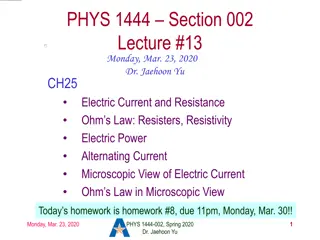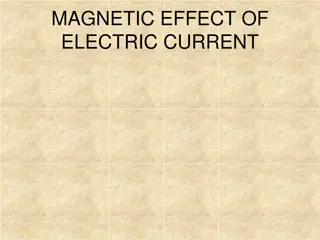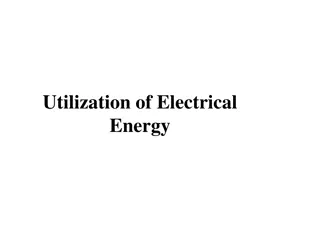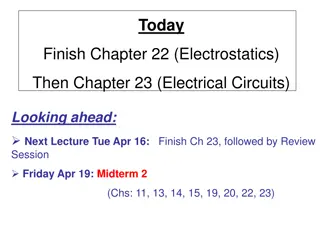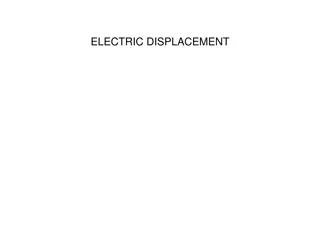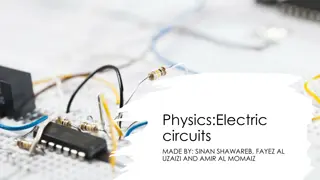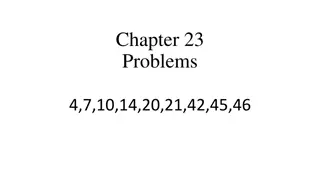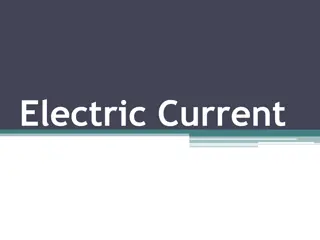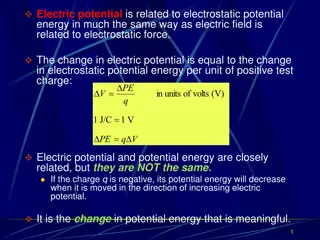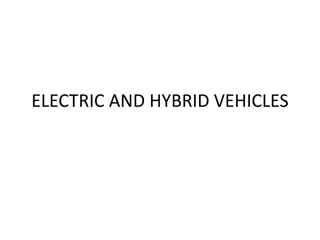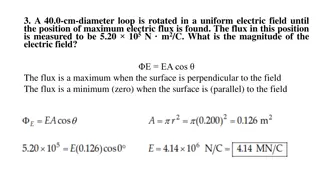
Understanding Electric Fields and Charges
Explore the concept of electric fields and charges, including the definition of electric field, use of test charges, calculation methods for electric fields, Gauss' Law, and the behavior of electric fields within conductors. Discover how electric fields interact with charges in various configurations and the principles of electrostatic equilibrium.
Uploaded on | 0 Views
Download Presentation

Please find below an Image/Link to download the presentation.
The content on the website is provided AS IS for your information and personal use only. It may not be sold, licensed, or shared on other websites without obtaining consent from the author. If you encounter any issues during the download, it is possible that the publisher has removed the file from their server.
You are allowed to download the files provided on this website for personal or commercial use, subject to the condition that they are used lawfully. All files are the property of their respective owners.
The content on the website is provided AS IS for your information and personal use only. It may not be sold, licensed, or shared on other websites without obtaining consent from the author.
E N D
Presentation Transcript
The Electric Field The electric field is present in any region of space if there exists electric forces on charges. These electric forces can be detected using a test charge. Test charges are theoretical positive charges that do not alter the electric field to be detected. Electric field at a point in space is defined as the electric force per unit test charge placed at that point. The SI unit for the electric field is the newton per coulomb (N/C). Electric field is a vector.
The Electric Field of a Point Charge Qq F = . k 2 r F Q = = . E k 2 q r
P 45 Chap 18 Two charges are located on the x axis: q1 = +6.0 C at x1 = +4.0 cm, and q2 = +6.0 C at x2 = -4.0 cm. Two other charges are located on the y axis: q3 = +3.0 C at y3 = +5.0 cm, and q4 = -8 C at y4 = +7.0 cm. Find (a) the magnitude and (b) the direction of the net electric field at the origin.
Electric Field Lines Positive point charge Negative point charge Dipole Two like charges Parallel plate Capacitor
Gauss' Law Gauss' Law: The electric flux, E through a Gaussian surface is equal to the net charge Q enclosed by the surface divided by, 0 the permittivity of free space:
18.8. The Electric Field Inside a Conductor: Shielding At electrostatic equilibrium: 1. Any excess charge resides on the surface. 2. The electric field is zero inside the conductor.
Conductor in Electric Field Under electrostatic equilibrium: 1. The conductor shields the electric field. 2. The electric field just outside the surface a conductor is perpendicular to the surface. Sensitive electronic circuits are often enclosed within metal boxes that provide shielding from external fields.







